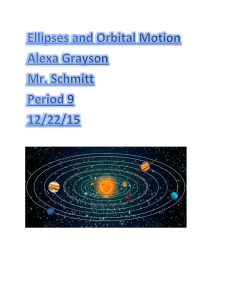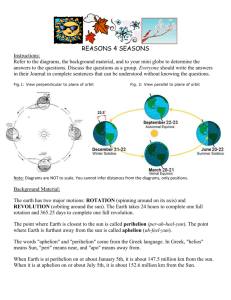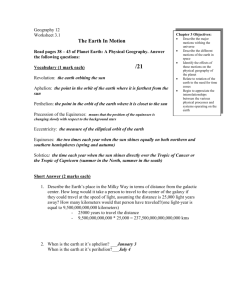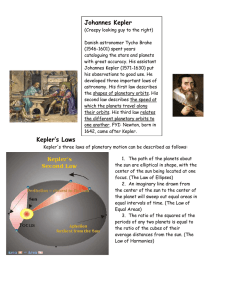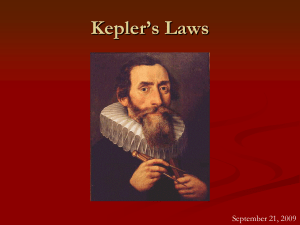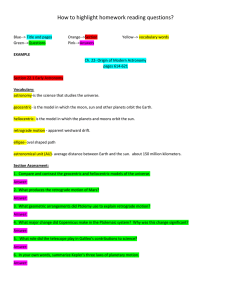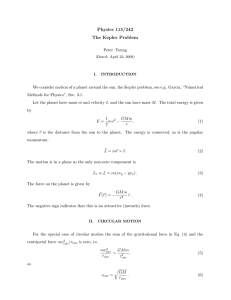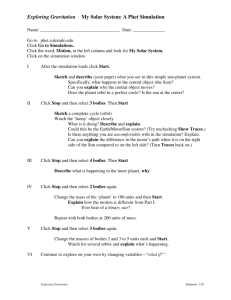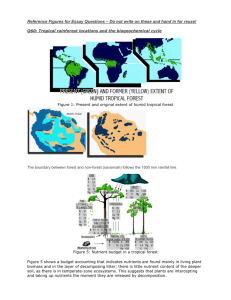200_Ch22-1OriginOfModernAstronomy
advertisement
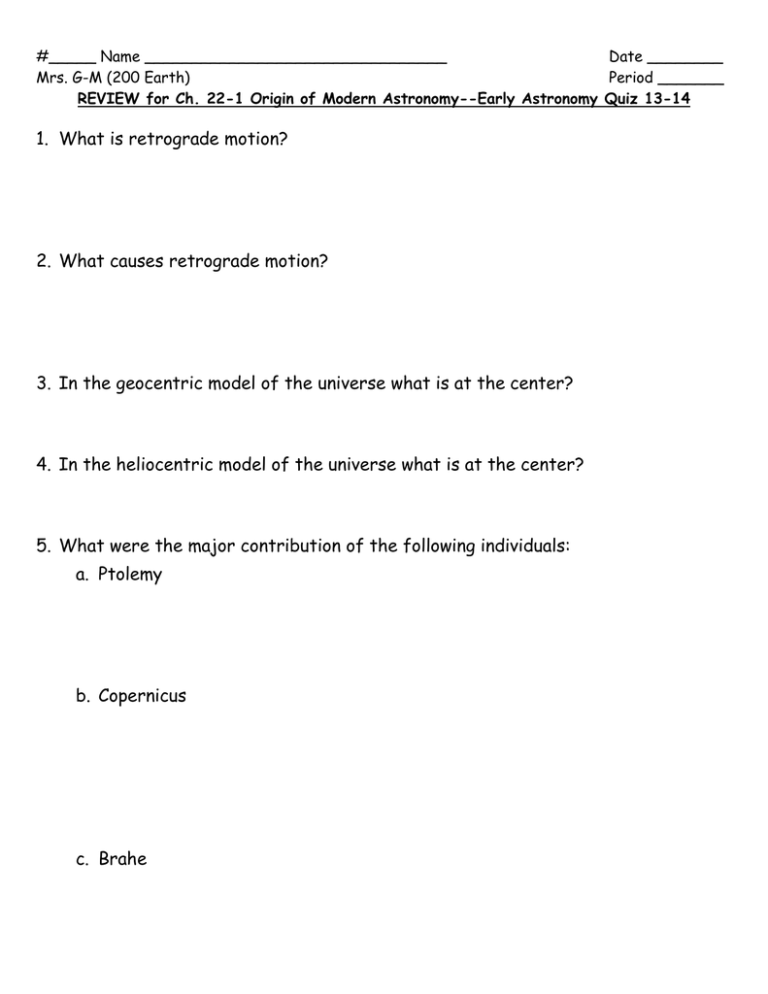
#_____ Name ________________________________ Date ________ Mrs. G-M (200 Earth) Period _______ REVIEW for Ch. 22-1 Origin of Modern Astronomy--Early Astronomy Quiz 13-14 1. What is retrograde motion? 2. What causes retrograde motion? 3. In the geocentric model of the universe what is at the center? 4. In the heliocentric model of the universe what is at the center? 5. What were the major contribution of the following individuals: a. Ptolemy b. Copernicus c. Brahe #_____ Name ________________________________ Date ________ Mrs. G-M (200 Earth) Period _______ REVIEW for Ch. 22-1 Origin of Modern Astronomy--Early Astronomy Quiz 13-14 d. Kepler i. Describe Kepler's 3 Laws of Planetary Motion. 1. First Law--The Law of Orbits a. What is the shape of a planet's orbit? b. Where is the sun located in a planet's orbit? c. What is eccentricity? d. What numbers does eccentricity range between? e. What is the equation for eccentricity? f. Calculate the eccentricity of the orbit to the right. Show your work! d = _____________ L = _____________ e = _____________ (Round to 2 decimal places.) 2. Second Law--Equal Area Law 3. Third Law--Law of Periods (or Harmonic Law) a. How does the distance of a planet from the sun affect its revolutionary period (how long it takes to orbit the sun/the length of its year)? Why? #_____ Name ________________________________ Date ________ Mrs. G-M (300 Earth) Period _______ REVIEW for Ch. 22-1 Origin of Modern Astronomy--Early Astronomy Quiz 13-14 e. Galileo f. Newton i. Which two factors affect the gravitational force between two objects? 1. How do they affect the gravitational force? 6. What is perihelion? a. When is Earth at perihelion? b. Is a planet moving fastest or slowest at perihelion? Why? c. Would the sun's gravitation force be strongest or weakest at perihelion? Why? 7. What is aphelion? a. When is Earth at aphelion? b. Is a planet moving fastest or slowest at aphelion? Why? c. Would the sun's gravitation force be strongest or weakest at aphelion? Why?
